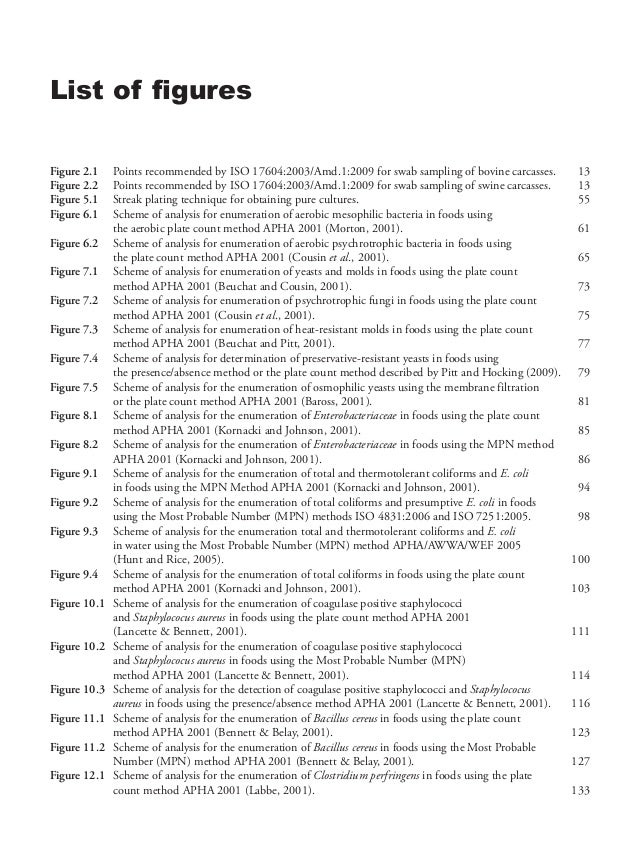Apha-awwa-wef 21st Edition 2005
- Sears List Of Subject Headings 21st Edition
- Api 1104 21st Edition
- Fundamental Accounting Principles 21st Edition
Article citations APHA (2005) Standard Methods for the Examination of Water and Wastewater. 21st Edition, American Public Health Association/American Water Works Association/Water Environment Federation, Washington DC.
Has been cited by the following article:. TITLE: AUTHORS:, KEYWORDS:, JOURNAL NAME:, September 19, 2016 ABSTRACT: In the present study, 23 isolates, dominated by bacterial genera (74%) were isolated from petroleum sludge at refinery wastewater plant, Jeddah, KSA, by means of selective enrichment in nutritionally optimized refinery wastewater (NORWW) and over twelve successive transfers.


Sears List Of Subject Headings 21st Edition
Efficiency of biodegradation on complex mixture of hydrocarbons present in refinery wastewater was evidenced by changes in both total viable counts (TVC) and COD content of cultivation broth. Out of the 23 isolates three most potent isolates named BDCC-TUSA-8, BDCC-TUSA-12 and BDCC-TUSA-18 were selected for their efficient COD removal and active growth. The three isolates were tested separately in Bushnell-Haas (BH) media for their capabilities to degrade n-Hexadecane, phenol and phenanthrene, representing the major types of hydrocarbon pollutants.
Standard Methods is a joint publication of the American Public Health Association. The American Water Works Association. 22nd Edition of Standard Methods. American Public Health Association. (AWWA) & Water Environment Federation (WEF). Wastewater, 21st Edition, 2005.
The results strongly indicated that all three isolates showed multiple degradation potentials with remarkably fast reaction rates. Before being recommended for future work, the three isolates were fully characterized and identified employing culture-dependent techniques such as API 20E, API 20NE and API 50CHB, and further confirmed by partial 16S rRNA gene sequencing and phylogenetic analysis as Pantoea agglomerans, Acinetobacter lwoffii and Bacillus thuringiensis respectively.
The obtained potent strains provide valuable candidates if assemblages of mixed fewer strains with overall broad and complementary enzymatic capacities are to be considered in order to bring the rate and extent of petroleum biodegradation further as a cost-effective process.
1Department of biotechnology, Gitam institute of science, GITAM University, Visakhapatnam 2Department of biotechnology, Gitam institute of Technology, Gitam University, Visakhapatnam 3Environment and safety, synergies and castings limited, Visakhapatnam. 2014, 146-150 DOI: 10.12691/ijebb-2-4-1 Copyright © 2014 Science and Education Publishing Cite this paper: Sheela.
Api 1104 21st Edition
B, khasim beebi. S, Yellaji rao.O. Bioremediation of Ammonia Using Ammonia Oxidizing Bacteria Isolated from Sewage.
Fundamental Accounting Principles 21st Edition
International Journal of Environmental Bioremediation & Biodegradation. 2014; 2(4):146-150. Doi: 10.12691/ijebb-2-4-1. Correspondence to: Sheela. B, Department of biotechnology, Gitam institute of science, GITAM University, Visakhapatnam. Urbanization in the world increased the pollution levels in the environment making it for worsen life.
After the website has been downloaded, you can use SurfOffline as an offline browser and view downloaded web pages in it. Serial keygen patch. The software allows you to download entire websites and download web pages to your local hard drive. The SurfOffline wizard will allow you to quickly specify the website download settings. SurfOffline combines powerful features and a convenient interface. SurfOffline 2.0 & 2.1 serial keygen download free: SurfOffline is a fast and convenient website download software.
General awareness about pollution is increasing today. To control pollution levels, biological methods are eco-safe and economical. In this study a wild strain of Bacillus species was isolated and optimized for bioremediation studies of ammonia in flask cultures. Strategy was tried to develop for ammonia bioremediation in a single stage aerobic nitrification and denitrification.
The results reveal that the optimum pH for the isolated Bacillus species was 7 and optimum temperature was 30°C. At optimum pH and temperature this organism was able to remove 99.2% of ammonia in flask cultures supplemented with 5g/L of ammonium sulphate. The biomass obtained after bioremediation studies was 0.3g/L which is very low. The study on ammonia toxicity revealed that toxicity was due to pH and osmolarity.